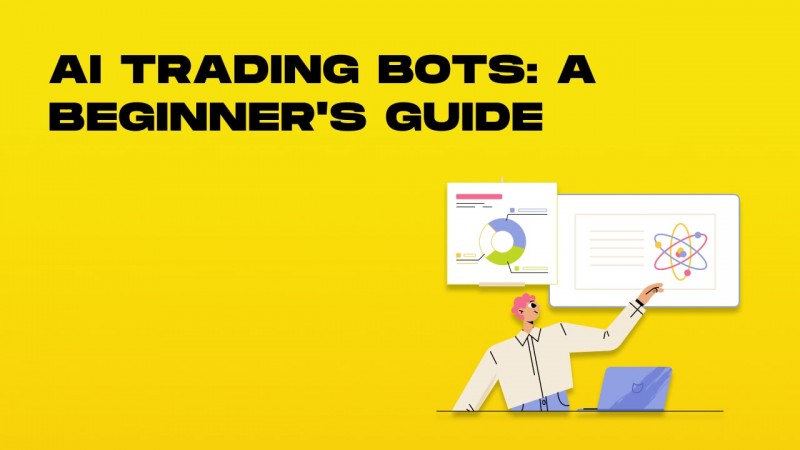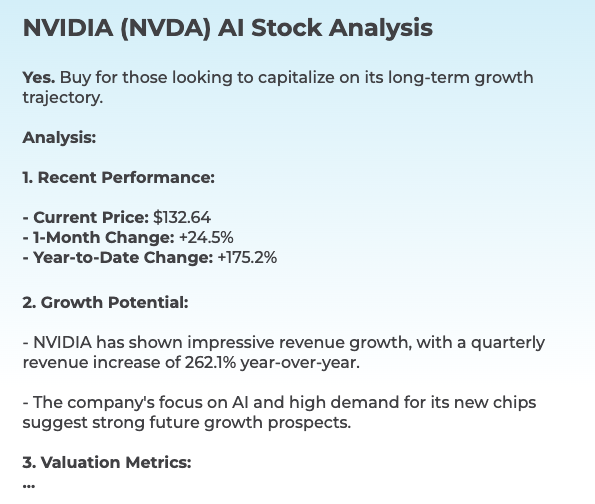20 Free Advice On Picking AI Stock Picker Analysis Sites
20 Free Advice On Picking AI Stock Picker Analysis Sites
Blog Article
Top 10 Tips On Assessing The Strategy Customization Of Ai Stock Predicting/Analyzing Trading Platforms
AI platform for stock-predicting and analyzing stocks offer a number of customization options, which allow users to modify their platform to meet their specific trading objectives as well as their risk tolerance and market conditions. Platforms that offer powerful customization options will increase the efficiency of your trading. Here are 10 suggestions on how to assess the customizability of the platforms.
1. Evaluate Pre-Built Strategy Templates
Variety of templates: Determine if the platform provides an array of already-designed trading strategies (e.g. day trading, swing investing, long-term investment).
The ease of use is an excellent indicator.
Performance history: See if you can access past performance data of the pre-built strategies.
2. Assessment Customized Strategy
Drag-and-drop tools: Search for platforms that offer user-friendly drag and drop interfaces for customizing strategies.
Coding options: For more advanced users, check if the platform supports custom-written coding in a scripting language that is proprietary (e.g. Python, R).
Flexibility: You need to be able define the criteria for entry and exit, risk management parameters and other aspects that are essential to your plan.
3. Check for Backtesting Capabilities
Historical data. Examine whether your platform can supply enough historical data in order to test the strategy.
Customizable parameter: Make sure you can adjust parameters while backtesting (e.g. indicators and timeframes).
Performance metrics: See if the platform provides specific measurement of performance (e.g. win rate Sharpe ratio, drawdown) for backtested strategies.
4. Evaluate Real-Time Strategy Testing
Paper trading or simulation Make sure the platform is compatible with paper trading that allow you to try out trading strategies in real time and without risking money.
Live testing - Check that you can test strategies with small amounts to see how they work.
Real-time adjustments: Verify whether strategies can be modified according to market conditions.
5. Examine the integration using technical indicators
Indicator library: See if the platform offers a comprehensive collection of technical indicators (e.g., moving averages, RSI, MACD).
Custom indicators. Ensure that you have the ability to create or use custom indicators in your strategy.
Verify that the platform allows you to mix multiple indicators into complex strategies.
6. Check for Risk Management Tools
Stop-loss/take-profit: Ensure the platform allows you to set stop-loss and take-profit levels within your strategies.
Sizing your positions. Make sure you have established rules for the best way to handle the risk (e.g. the amount you set, percent of portfolio).
Risk-reward Ratio: Verify that the platform supports setting individual risk-reward levels to strategies and trades.
7. Evaluate Multi-Asset Strategy Support
Asset classes: Ensure that the platform can handle various asset classes like ETFs, stocks and options.
Strategies for cross-assets: Determine if you're able to design strategies that take advantage of different asset classes.
Market coverage. Check if the platform has market coverage that you are looking to invest in (e.g. US international, copyright).
8. Evaluate Automation and Execution
Automated trading - Ensure that the platform is capable of automating strategies that are based on the predefined rules.
Order types: Find out whether the platform can support different order types (e.g., limit, market, stop) to execute a strategy.
Check for latency: Make sure that the platform allows for trades to be executed at the least amount of latency. This is crucial in the context of high-frequency strategies.
9. Check for Strategy Optimizing Tools
Parameter Optimization: Ensure whether the platform provides tools for optimizing the parameters of strategies (e.g. genetic algorithms grid search).
Machine learning: Ensure that the platform you choose to use has machine learning integrated to refine and improve strategies.
Scenario Analysis: Determine if the platform supports testing strategies in different markets (e.g. bull bear, bear, volatile).
Check out the User Feedback and Community Feedback
User reviews: Read the feedback of users to assess the platform's ability to adapt strategies.
Community forums: Check if you can find forums where users can discuss and exchange ideas for custom strategies.
Support resources for users - Make sure that the platform includes instructions and documents for users to create and improve strategies.
Bonus Tips
Trial period for free: You are able to try out the customizable options of the platform with a an online demo or a trial period for free.
Scalability: Your platform needs to be able to support more complex trading strategies as you evolve.
Support for customers: Find out if the platform can provide support on strategy-related issues and questions.
If you follow these guidelines, you will be able to evaluate the potential of AI platforms for analyzing and predicting stocks to modify strategy. This will allow you to choose a trading platform that aligns with your objectives in trading and lets you implement and refine strategies. A platform with strong customization options allows you to change your strategy to meet the changing market conditions and enhance your performance. Have a look at the top rated redirected here on ai investment platform for more advice including chart ai trading assistant, best ai trading app, stock ai, investing ai, ai chart analysis, ai for stock predictions, stock ai, using ai to trade stocks, trading ai, trading ai and more.
Top 10 Tips On Assessing The Effectiveness Of Ai Stock Predicting/Analyzing Trading Platforms
To ensure that AI-driven prediction platforms and trading platforms can handle the increasing amount of data, user requests, and market complexity, it is crucial to assess their capacity. Here are the top 10 tips to evaluate scalability:
1. Evaluate Data Handling Capacity
Tips: Determine if the platform has the ability to analyze and process large data sets.
The reason: A scalable platform should be capable of handling the increasing data volume without performance degradation.
2. Testing Real Time Processing Capabilities
Find out how your platform is able to handle streaming data in real time such as live stock quotes, or breaking news.
The reason: The importance of real-time analysis is to make trading decisions. delay can result in missing opportunities.
3. Cloud Infrastructure and Elasticity Cloud Infrastructure and Elasticity: Take a look
TIP: Make sure your platform is cloud-based (e.g. AWS, Google Cloud or Azure) and has the ability to dynamically scale resources.
Why: Cloud-based platforms provide the flexibility. They permit the system to be scaled up and down based on the need.
4. Algorithm Efficiency
Tip: Evaluate the computational efficiency of the AI models (e.g. deep learning, reinforcement learning) that are used to make predictions.
Why: Complex algorithms can be resource-intensive, and optimizing them is crucial to scalability.
5. Investigate Parallel Processing and Distributed Computing
Tips: Find out if a platform uses parallel processing and distributed computing frameworks.
Why: These new technologies allow for faster analysis of data and processing across multiple nodes.
Examine API Integration. API Integration.
Test the platform’s integration capabilities with external APIs.
Why? Because the platform is able to adapt to the changing requirements of markets and sources of data thanks to seamless integration.
7. Analyze User Load Handling
Tip: Simulate the impact of high user traffic to test how the platform performs under pressure.
Why should scalable platforms provide the same performance regardless of how many users are there.
8. Evaluation of Model Retraining and adaptability
TIP: Assess how frequently and effectively AI models are being trained by new data.
The reason is that as markets change, models must be updated quickly to remain exact.
9. Examine for fault tolerance and redundancy.
TIP: Make sure your platform is equipped with failover and redundancy features to handle hardware or software failures.
Why is that downtime in trading is costly, which is why fault tolerence is important to allow for scalability.
10. Monitor Cost Efficiency
TIP: Take into consideration the cost of scaling your platform. Be aware of cloud resources like storage for data as well as computing power.
Why is it important to keep a balanced balance between expenses and performance costs.
Bonus tip Future-proofing
Check that the platform is able to incorporate new technology (e.g. quantum computing and advanced NLP), and is able to adapt to regulatory changes.
By focusing on these aspects you will be able to assess the capacity of AI stock prediction and trading platforms, ensuring that they are reliable, efficient and ready for the future growth. Have a look at the top rated her latest blog about investing with ai for more examples including ai stock prediction, stocks ai, ai stock trader, stocks ai, invest ai, ai stock predictions, ai copyright signals, ai stock predictions, ai stock investing, best ai stocks and more.